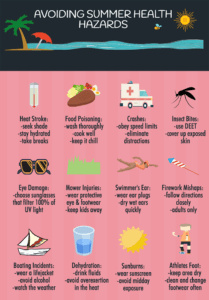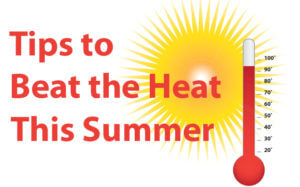
Tips for Summer
Summer has finally arrived! It’s time to whip out the BBQs, dig out those bikinis and jet off on holiday for some well-deserved relaxation on the beach.
However, for many of us, summer also brings the temptations of ice cream, overdoing the tan, and forgetting the summer diet and exercise.
Summer means heat, lots of sweating, dryness, skin problems like tan, sunburns, pimples, heat rashes, blemishes, and much more. With the blazing sun of the summer months, you need to know how to look after the skin properly and look fresh and vibrant.
Summer season begins, it’s time to get ready for the scorching sun as well as heat. Summer is the time of the year when everybody searches for summer health care to maintain your body in the right shape. Summer also requires a change in diet and other healthier lifestyle tips. Summer eating could be enjoyable with fresh seasonal produce, outdoor eating, and entertaining for special occasions or family gatherings.
We ought to take some precautions in this season. The summertime is a great time to build up your fitness program, enjoy fresh fruits and vegetables, take a vacation, and have fun. It’s also a time to focus on your health and safety. Here are a few health care tips to help you stay healthy and safe this summer.
Just using a good sunscreen is not enough for your skin in summer. You need to take proper care of your skin and hair too.
Click here for Health Care Tips
- Always apply sun cream: It is important to use a sun cream lotion of at least SPF 30 in order to protect your skin from harmful UV rays. For sensitive skin, a mineral-based sunscreen is best. Don’t sit in the sun during peak hours between 11 am and 4 pm in order to minimize UV radiation. If you are planning to be out in the sun for a long period of time, reapply sun cream every two to three hours.
- Drink plenty of water: During the hot summer months, heat and sweat can leave your body dehydrated. A lack of water is harmful to your body and can also make you crave food when you’re not actually hungry. It is incredibly important to keep yourself hydrated by drinking at least eight to nine glasses of water a day. Bored with water? Add some low calorific flavoring to water such as a piece of fruit, or opt for healthy alternatives like green tea or coconut water.
- Beware of ‘healthy’ smoothies: Fruit smoothies are a great way to get your five-a-day and keep refreshed throughout the summer but watch out for smoothies made with frozen yogurts or ice cream as they can be extremely calorific. A healthy smoothie should be made with fruit, juice, low-fat yogurt, and ice. Use any fruit you might have or have kept in the freezer, and throw it all in a blender to make a perfect summer drink.
- Exfoliate: Summer means an increase of dead skin cells so it is important to exfoliate your skin to keep it smooth and silky. You don’t need to buy any expensive products to achieve that summer glow; simply use a loafer for a light scrub or make your own exfoliation lotion using a handful of oatmeal, milk, and yogurt.
- Keep up the exercise regime: Before you hide those running shoes in the wardrobe, remember summer exercise doesn’t have to stop because of the rising temperatures. Instead of working out outside, change your exercise plan, and take it indoors. Join a gym, take up a step class, or get a group of friends around for an afternoon of exercise DVDs.
- Get wet: Summer is the perfect time of year to get wet! Boring runs in the cold wintery weather can be swapped for a summer swim at your local pool or gym. Start by swimming for 10 minutes and increase the time over the following weeks by doing front crawl, breaststroke or backstroke to mix up your cardio workout. A 30-minute session of this full-body workout will burn almost 400 calories! If swimming laps isn’t your thing, join a water aerobics class or create your own aerobic workout with jumping jacks, marching and jogging in water.
- Olive oil: Olive oil is a healthy fat that contains essential fatty acids that help skin resist UV damage. These fatty acids are also part of the cell membranes that keep in all that moisture your body loses through heat and sweat during the summer. In order to protect your skin and keep it supple, consume about 1 tablespoon of olive oil daily or add it to a healthy salad or fish dish in order to get all those essential fatty acids.
- Protect your glossy locks: Our hair suffers a lot during the summer. Constant heat, sun damage, and chlorine takes a toll on our hair and can leave it feeling limp and dull after the holidays. If you’re planning on swimming a lot during the summer, it is advisable to use anti-chlorine shampoo and conditioner to help neutralize the chlorine from your hair. If possible, minimize the use of hairdryers, straighteners, and other heating products.
- Eat healthy by the pool: When the sun is beating down, the idea of seeking out the nearest ice cream stand is seriously tempting. Stay strong by being prepared, and pack a cooler full of healthy snacks and juices. Fill your ice-box with ice, bottled water, sandwiches, vegetable sticks with hummus, yogurts, and endless amounts of fruit.
- Take up a new hobby: Summer is the perfect time to take up a new activity. Gardening is a great way to enjoy the outdoors and will actually help you burn some calories! Planting a herb garden is a fantastic way of getting your hands dirty, having quick access to some healthy flavors for your summer meals, and, if you have kids, get them involved in playing outside. If gardening isn’t your thing, get some inspiration from Wimbledon and try your hand at some Badminton, tennis, or golf. Pilates is the perfect alternative for some alone time in the garden. Roll out a towel and have some fun trying out planks and some breathing techniques in the sun.
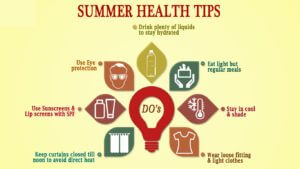
Click here for Tips for Staying Healthy in Summer
Take a Cool Shower: Hot showers after sun exposure further dry the skin. A cool shower after excess sweating helps keep the skin unblocked, and decreases acne breakouts.
Hydrate your skin: Skin is the largest organ and needs to be kept hydrated all the time. 8 to 12 glasses of water helps to soothe the skin and keeps it supple.
Protect your skin from the sun: Use a good sunscreen with correct SPF properly and repeat as frequently as required. My health feed titled ‘Know your Sunscreens’ gives a detailed insight into the sunscreens.
Timed Travel: Sun rays are the harshest in the noon. Try to avoid direct sun exposure between 11 am and 4 pm as much as possible.
Sip in your Antioxidants: Antioxidants are the key for summer, and there are tons of ways to work them into your routine.
Resveratrol, a naturally occurring phenol found in the skin of red grapes can decrease redness from acute sunburns. It has an anti-inflammatory and antioxidant effect, helps strengthen your skin’s outer layer. Watermelons are loaded with antioxidants and are rich in water content.
Love your legs: The trick to great summer legs is to alter the way light reflects off the skin’s surface. Exfoliate first, scrub and apply a good moisturizer. Always use a sunscreen.
Wear a wide brim: A plain cap won’t protect your face from the sun coming at an angle. Opt for a hat with a brim for full protection.
Feed your face: The best tool for an even summer skin tone is probably already in your fridge. Cut a large strawberry in half, swipe it across your face in small circles, leave it on for about two minutes, then rinse off. This will also brighten the sun and age spots over time.
Pamper your hands and feet: The thin skin on your hands and feet wrinkles and pigments easily, so be sure to use sunblock daily. Exfoliate frequently and apply moisturizer at night.
The following Homemade Scrub for hand and feet will help to keep them soft and supple.
- Mix well one tablespoon of coconut oil, 1/4th cup of sea salt, and 1/4th cup of fine sugar (brown or white).
- Add the juice of a lime and mix again in a blender for about 30 seconds.
- Store in an airtight container and use within a week.
Light is nice: Summer means heat, lots of sweating, dryness, skin problems like tan, sunburns, pimples, heat rashes, blemishes, and much more. With the blazing sun of the summer months, you need to know how to look after the skin properly and look fresh and vibrant.
Just using a good sunscreen is not enough for your skin in summer. You need to take proper care of your skin and hair too.
A lot of sunscreens are heavy and oily. These can contribute to breakouts and shine during the summer months. You can switch over to a water-based or gel-based sunscreen. Also wherever and whenever possible use a cap or cover your face with a kerchief or dupatta.
Bounce back from sunburn: The traditional Indian chaas, lassi is amazingly soothing to your sun-scorched skin.
Spritz your Scalp: Long locks offer some shade from the sun, but the sensitive skin along your hairline and parting still get bombarded with harmful UVA and UVB rays. Use a sunscreen spray along the scalp line. It’s harder for creams to be absorbed there, and you can still get a sunburn.
Supercharge your Skin: Cantaloupe (our kharabooja) is the melon of choice for beautiful summer skin. The sweet delicious fruit is rich in antioxidants and delivers a unique hydration to the skin, resulting in a radiant complexion. It can actually boost your SPF by several factors
Keep Blemishes at Bay: During the warmest months, blemishes, acne can occur in embarrassing locations.
Select your sunscreen wisely. Sleep with a clear face. It is highly necessary to put off all your makeup at night because it can seriously damage your skin. You can use a cleanser to remove all the makeup perfectly.
Save your skin: Sunny days make your skin pigment uneven, consequently, the skin that gets extra exposure to the sun becomes dark and patchy. Once patches set in, it’s very hard to remove them. So apply some soothing creams over your skin daily or apply cold compresses whenever you come back home. Do not miss out on your sunscreen.
The lactic acid in curd is calming and soothing for the skin.
Leave it on for 30 minutes as a mask before taking a cool shower and pat dry.
Freeze aloe vera gel in ice trays. You can use the compresses if you get sunburnt.
Beat the itch: Bug bites can itch and look unsightly for weeks after they become inflamed. If you happen to get a sting, apply cold compresses, apply chilled aloe vera gel twice daily until itching resolves. Avoid scratching.
Apply kojic acid containing creams twice a day to fade off any residual marks.
Nail care: Many of us opt for gels or long-lasting chemical nail varnishes to keep chlorine and saltwater from chipping away at polish. Unfortunately, these chemical-laden lacquers also leave your nails with a yellow stain.
Soak your nails for ten minutes in a mixture of four parts water and one part hydrogen peroxide. Use a buffer and lightly massage almond or jojoba oil into your nails and nail bed to get them back to their healthy, natural hue.
Hair Care: In the hot summer days, we need to wash hair almost daily, because they become tacky sooner. Use a mild or natural shampoo that does not contains chemicals. Also, avoid using heavy conditioners because it could make hair look sticky in summer.

Click here for General tips for Summer Season
- Switch off Those Lights
Too many electric bulbs and lights in the room tend to heat up the temperature. So switch off as many lights as you can and use only the ones you require. Certain factors like concrete buildings, top floors, pollution, etc can make the situation worse by trapping heat. Keep the curtains drawn if the harsh rays seep into the house.
- Eat Regularly, But Eat Light
Summertime tends to reduce one’s appetite because of excessive heat. But it is important for you to eat regularly because your body requires the nutrients to fight the heat and keep you healthy. Having said so, the best thing to do is to follow a light diet including summer veggies like squash, lauki, cucumber, ivy gourd, etc. Avoid heat-generating foods like meat, eggs and other proteins, and even salt intake.
- Stay Indoors
Keep a check on the weather forecast. This is important because you can then track the hottest days and plan accordingly. If you love walking, try to do so only in the early hours or after sundown.
- Wear Loose Clothes
Needless to say, to stay cool you need to wear loose clothes so that there is good air circulation. Ditch your synthetic dresses and trousers and stick to cotton. Even while heading out, keep yourself covered from the harsh rays.
- Don’t Exert Yourself
Physical activity is essential for good health, but during summers, make sure that you don’t overexert yourself. You need your energy levels to keep you active. Resort to indoor gyms rather than engaging in outdoor activities. And remember to stay hydrated.
Enjoy your warm-weather favorites while keeping your nutrition in check with the tips below.
- Drink green tea instead of sweet tea. Green tea has a natural component that helps speed up your metabolism. Skip the box tea and opt for the brew-it-yourself with boiling water and a tea-bag-type tea.
- Serve seafood. Summer is the ideal time to get the freshest catch from your local grocer. Grill salmon, tuna, lobster, steamer clams, and calamari for a low-calorie, protein-packed lunch or dinner.
- Don’t skip breakfast. When you wake up in the morning, your body is running on fumes. Eating a breakfast with protein, carbs, and healthy fat kicks your metabolism into high gear and provides energy for the day.
- Enjoy summer fruits and veggies. It’s easy to sink into a vegetable rut, eating the same boring veggies week after week, but with summer comes fresh choices. Including a mix of in-season colorful veggies in your meals gives your body a nutrient kick.
- Snack at work. Bring snacks to work and graze throughout the day. When you eat more often—five to six times per day—you’re far less likely to overeat and more likely to stay energized.
- Grab a sports drink. For workouts lasting longer than 45 minutes, drinking a sports drink every 15 to 20 minutes can help you maintain energy, increase endurance, and stay hydrated.
- Hydrate often. The summer heat makes you more susceptible to dehydration. Start off your day by drinking two glasses of water and keep drinking at each meal, as well as before and after your workout, to stay hydrated. Carry a water bottle with you as a reminder to stay hydrated.
- Cook meals together. Involve your friends and family in your healthy lifestyle this summer. A simple way to start: Plan meals, shop, and cook with your spouse and kids.
- Downsize your dinnerware. We’re not talking about buying new plates, just using the smaller ones in your set for meals like lunch and dinner.
- Recover with a post-workout shake. After exercising, blend your favorite summer fruits and a scoop of whey protein into a shake to kick start the muscle-building process, help your body recover from training, and boost your energy levels.
- Pre-plan your meals. You plan your weekend getaways and activities for summer. Why not your meals? Make it easy by preparing all of your food on Sunday so that you have enough meals for the week. The best part: You’ll save money.
- Eat healthy at the beach ( when you go out ). Ice cream stands and high-calorie barbecues are bound to put a damper on your diet, so stay clear of these temptations by being prepared. Pack a cooler with ice, bottled water, sandwiches on whole-grain bread, pita chips, hummus, yogurt and lots of fruit. You’ll feel healthier and happier at the end of the day.
- Give your house a summer cleaning. You need an environment that reflects your healthy way of living and your summer fitness goals. To start, remove unhealthy foods from your home (so you’re not tempted). While you’re at it, stock your office with fruit, nuts, and other healthy snacks.
- Build a better burger. Create a healthier burger with whole wheat buns, lean meats, and delicious toppings like pineapple, wasabi, guacamole, and feta cheese.
Click here for Beauty tips for Skincare and makeup
- Moisturize – The problem with summers is the extreme heat that dehydrates your body and makes your skin dry. Dry skin is prone to damage and dullness, and you need to butter it up to make up for the moisture loss. The moisturizer acts as a barrier for pollutants, bacteria, and sunburn. Moisturizing is absolutely essential. Simply moisturize, there are no two ways about it.
-
7. Follow a Healthy Diet – A healthy diet – an excellent mix of fruits, vegetables, nuts, cereals, and pulses. A fine balance of all the nutrients that your body requires. During summers, increase the intake of raw or boiled food. Include as many fruits and veggies in your meals as possible – go for salads, smoothies, and juices.
8. Shift to Clarifying Shampoo – Summers cause a build-up of sweat on the scalp, leading to irritation. Sweat attracts pollution and dust, which builds up in your hair. You need to clean it off regularly with a deep cleaning shampoo.
9. Deep Condition – The high humidity and heat during summers damage your hair texture and build. It causes dryness and a lot of frizz. Deep condition your hair ( with warm coconut oil ) to add life back to it and provide it with the moisture it needs.
10. Use Light Shades – Summers are the time to shift to lighter shades of makeup – be it lipsticks, eye shadows, nail polish, etc. It is all about going au naturale during the summer season.
11. Primer All the way – Primer will hold your foundation well and keep it together as summers are the time when your foundation can easily melt and get blotchy.
12. Choose waterproof Makeup – It’s common sense to choose waterproof eye makeup in summers because you do not want your kohl or mascara running down your face. Choose a nourishing mascara or kohl that moisturizes the tiny hairs as well.
13. Apply Bronzer right – Highlight the natural hues of your skin. Apply it lightly on your forehead, cheekbones, or near your mouth. Make sure you apply less because that is more than enough.
14. Focus on lip care – The skin of your lips is very sensitive. The hot sun during summers dries the delicate lip tissue and leads to thinning, scales, and spots. Get a luscious lip balm with SPF and slather it generously on your lips to protect them from the sun.
The summer season in India starts around March and goes on until June. Summer is the most difficult season in India as the temperature touches 40 and even goes beyond that. This unbearable heat leads to a lot of summer illnesses like – heat strokes, sun headaches, epistaxis (nose bleeding), dehydration, mosquito-borne diseases, etc. There really is no respite to it but all we can do is take preventive measures to keep ourselves fairly unaffected by the heat and its repercussions. Here are some ways to keep yourself healthy and going:
Clothing – Wear light-colored loose-fitting clothes, avoid deep-colored synthetic clothes. While going out wear sunglasses and always keep a tube of sunscreen handy.
Eat light – Include plenty of fruits and vegetables in your diet, consume food that is high in water content like cucumbers and watermelons. Eating plenty of green leafy vegetables, yellow and orange-colored fruits and vegetables, whole grains, pulses, and nuts and seeds such as almonds, pumpkin, and fenugreek keeps your body cool and ready to deal with the heatwave. Stay away from spicy food.
Stay hydrated – Drink plenty of water, drink water even before you feel thirsty. Drinking plenty of fluids throughout the day keeps the electrolytes balanced in your body. Buttermilk and tender coconut are also healthy options. Avoid colas and packaged juices that are high in sugar and calories.
Working out – Working out during summers is not easy but it keeps the stamina up. Do not work out in the scorching sun, work out early in the morning, late evening, or indoors.
Stay indoors – Unless required, avoid stepping out between 11 am – 4 pm. Stay home or stay inside your office, stepping out frequently and the transition from an AC to a non-AC environment can be disadvantageous for your health.
Click here for How to Stay Healthy in Summer
Summer along with the longer days, beautiful blossoms, and evening breeze do have its own set of drawbacks, as we cannot avoid that we need to be extra cautious about our health and make sure the heat doesn’t bog us down. The measures listed here are for prevention
1. Water is the best option to quench thirst.
It is a key ingredient in keeping the body cool. With high humidity levels, sweat will not evaporate quickly. This prevents the body from releasing heat in an efficient manner. This is why it is necessary to hydrate and drink water, even when you are not thirsty. Increase water intake regardless of your activity levels.
2. Avoid caffeinated or carbonated beverages, alcoholic beverages, and those high in sugar.
All these drinks contain preservatives, colors, and sugars. They are acidic in nature and act as diuretics. They cause loss of fluids through urine.
Many soft drinks contain diluted phosphoric acid, which damages the inner lining of the digestive tract and, therefore, affects its functions.
Excessive intake of soft drinks increases phosphorous levels in the blood. This separates calcium from the bones and moves it into the blood.
This calcium displacement from the bones makes them porous and brittle. It also causes plaque on the teeth, kidney stones, arthritis, and bone spur.
Soft drinks also reduce mineral levels in the body to such an extent that enzymes are unable to function well, resulting in indigestion.
3. Do not drink very chilled liquids.
They do not really help cool you down in summers, though they make you cool for some time. Drinking really cold liquids when feeling hot may lead to a slight constriction of the blood vessels in the skin and decrease heat loss, which is not advisable when trying to cool down.
4. Limit all strenuous activity.
5. Eat light, nutritious and non-fatty meals.
6. Reduce intakes of heaty vegetables and fruits, like spinach, radish, hot peppers, onions, garlic, beetroot, pineapple, grapefruit and ripe mangoes (if you cannot resist mangoes, soak them overnight in water).
7. Minimize the intake of dried fruits. Increase the intake of fresh fruit.
8. Use sabza(tulsi seeds) in your drinks — this has a very cooling effect on the body.
9. Include lots of fruits and vegetables in the form of salads and fresh juices, preferably without sugar, in your diet.
10. Drink lemon juice, coconut water, and thin buttermilk, to replenish the fluids that are lost in sweat.
11. Avoid sugary foods, especially honey and molasses, and stick to natural sugars available from fruits and veggies.
12. Minimize the intake of hot, spicy foods, and extremely salty foods. The body retains salt in the organic form found in fruits and veggies; the inorganic salt, meanwhile, is digested and needs to be thrown out of the body. And this is why you need to drink water!
13. Cut the intake of fried foods, like vadas, samosas, chips, bhajias, farsans, etc. Fat has a thermal effect.
14. Maintain good hygiene levels.
Since the sultry heat of summer increases with each degree rise in the mercury, by rooting ourselves to nature’s provision of healthful food choices we can experience the bloom of our health and vitality.
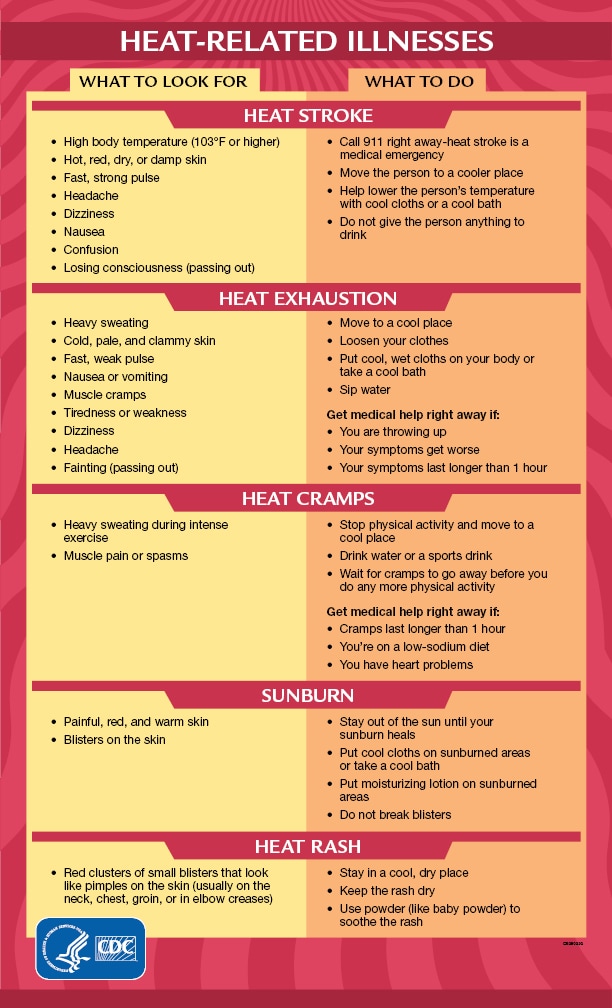
There are many misconceptions about summer weather and its effects on people and the environment. In order to stay both safe and informed, don’t fall prey to these myths….
Myth #1 – “Summer is when the Earth is closest to the sun: While it may seem logical to believe that summer is when the Earth is closest to its heat source, the sun, it is important to remember that it is not the distance from the sun, but the Earth’s axis tilt, that produces the seasons.
Myth #2 – Heat lightning is caused by the temperature: The lightning that is often seen in the summer months around nighttime within distant clouds is usually referred to as “heat lightning,” but this name is a misnomer. Heat lightning is not caused by the temperature outside but is merely a distant thunderstorm, usually from 60-100 miles away.
Myth #3 – A suntan is healthy: Even the most educated of people somehow manage to fall victim to this myth. The skin that has already been damaged is working even harder to repair itself, and can’t devote all of its energy to fighting future damage. This actually makes tanned skin more susceptible to both sunburn and, more dangerously, skin cancer.
Myth #4 – Ceiling fans cool a room: Fans don’t actually cool air at all – they simply provide moving air, which will evaporate the sweat on our bodies faster than still air. This leads to a cooling effect on our skin. However, in your house, the energy it takes to run the fan dissipates into heat energy due to inefficiency.
Myth #5 – Soda quenches your thirst: After a hot day in the sun, you may feel as though nothing would refresh you more than a glass of Coke. Actually caffeine is the reason that soda is dehydrating, the refined sugars in artificially sweetened drinks actually cause your body to pull more fluid and work extraordinarily hard to metabolize them.
Myth #6 – You can catch a cold from air conditioning: While the air conditioning will not make you catch cold, extreme changes in temperature can weaken your immune system and if those around you have a cold, you could be more susceptible. So while cold air alone won’t make you sick, jumping from the sweltering heat to the icy cool freshness of your air-conditioned home, can make you more susceptible to catching a virus.
Myth #7 – You can’t get a sunburn on a cloudy day: This is one myth that, if believed, can have harsh consequences. Even the thickest of clouds do not have the ability to block out UV rays. The sun may be hidden away, but it’s still there and although the breeze may keep you feeling fresh and cool, you are still at risk for sunburn. In fact, some of the worst sunburns occur on cloudy days.
Myth #8 – You are only sunburned if your skin is red: Sadly, you won’t always spot that your skin’s burning until it’s too late. It can take hours to kick in. That’s right, skin can keep burning for hours after sun exposure, and can take up to six hours to show redness.
Myth #9 -Eating ripe mangoes will cause heat boils: No fruit or food, not even mangoes, can cause extra heat in the body. There is no scientific evidence to back it. The boils depend on an individual’s constitution and environment.
Myth #10 – Too much air conditioning will make you sick: There’s no science to directly correlate summertime colds with air conditioning. If you’re allergy-prone or have any other lung issues, you might experience a flare-up from the change in air quality, but there’s no evidence that air conditioning itself can lead to illness or disease.
Myth #11 – As long as you have a good “base tan”, lying out in the sun is totally safe: To be clear: There is absolutely no such thing as a safe tan. If you have to be out in the sun, you should always use sunscreen — and make sure you’re applying enough.
Myth #12 – Eight glasses of water a day are enough: Depends on the person. Eight glasses are reasonable but you often need more as your surroundings change, and that happens all the time. More water is needed if you are under stress, exercise, are in a place with dry climate or high altitude.
Myth #13 – Any drink is hydrating: In the height of summer, with the sun beating down, sometimes all you want is a nice refreshing drink to help you hydrate and cool off. The only condition is for it to be cold. Many people reach for a beer or another alcoholic beverage, but that’s a mistake. Stay away from caffeinated drinks as well. These fluids tend to pull water from the body and promote dehydration.
Myth #14 – Hot weather speed up metabolism: The body will find a way to keep itself cool, mostly by sweating. The effect hot weather had on your metabolism is disputed, and, if any, it’s very small, especially if you compared it to your diet and exercise habits.
Fruits for Summer Season

Tips for Healthy Summer
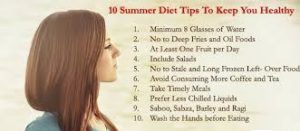
Summer Foods to Avoid
